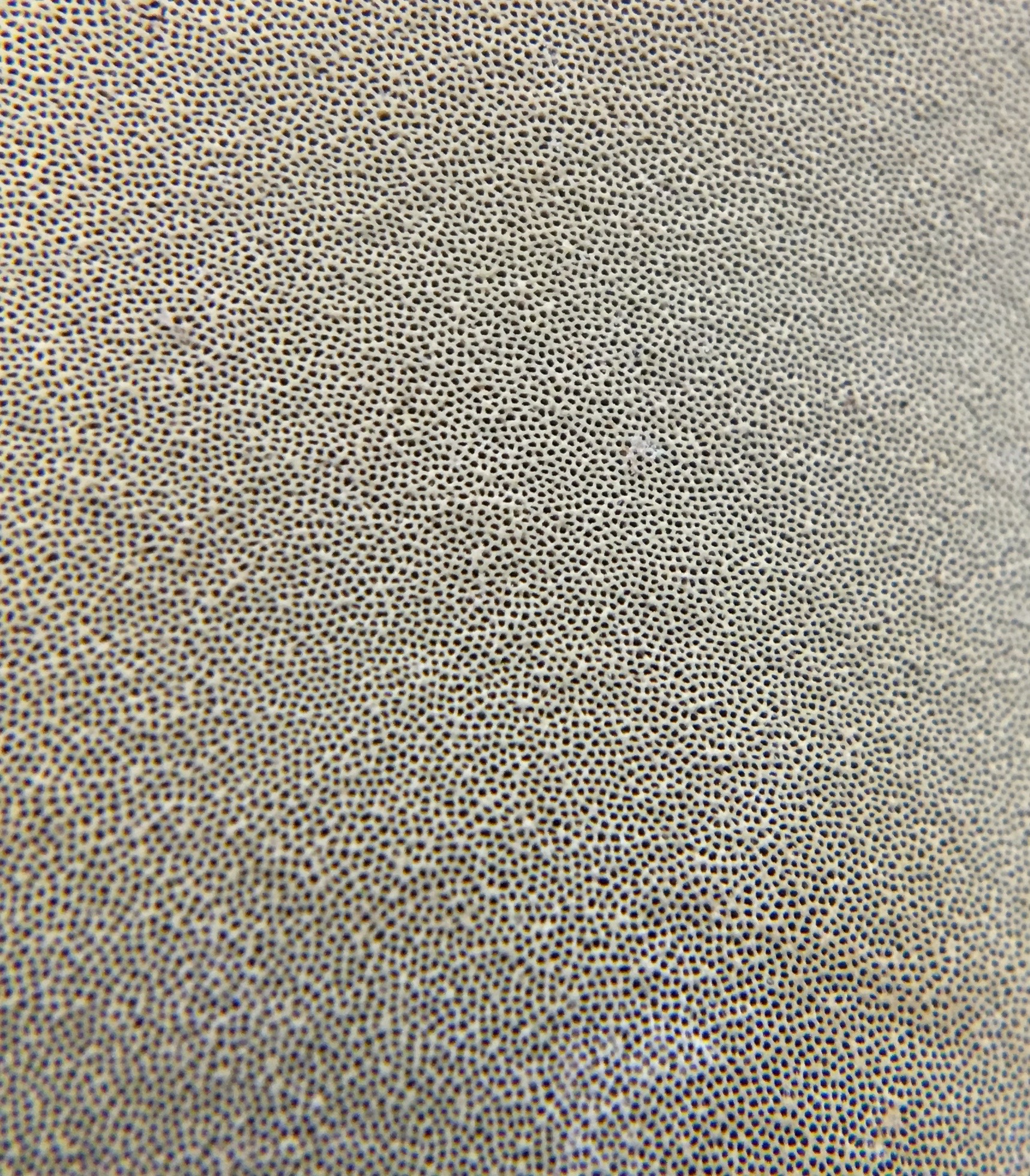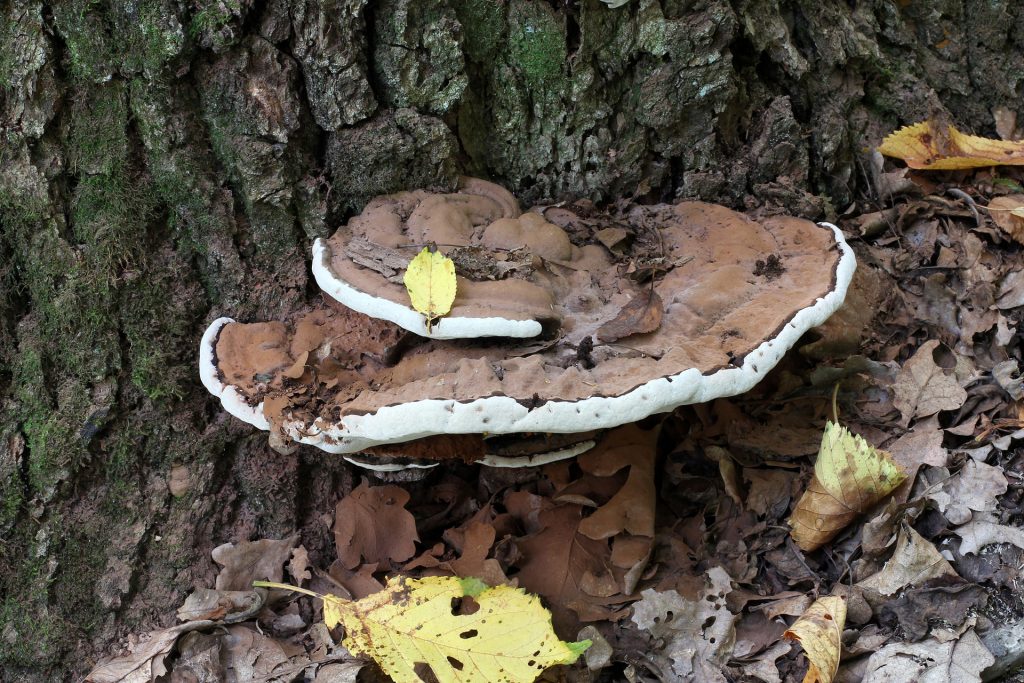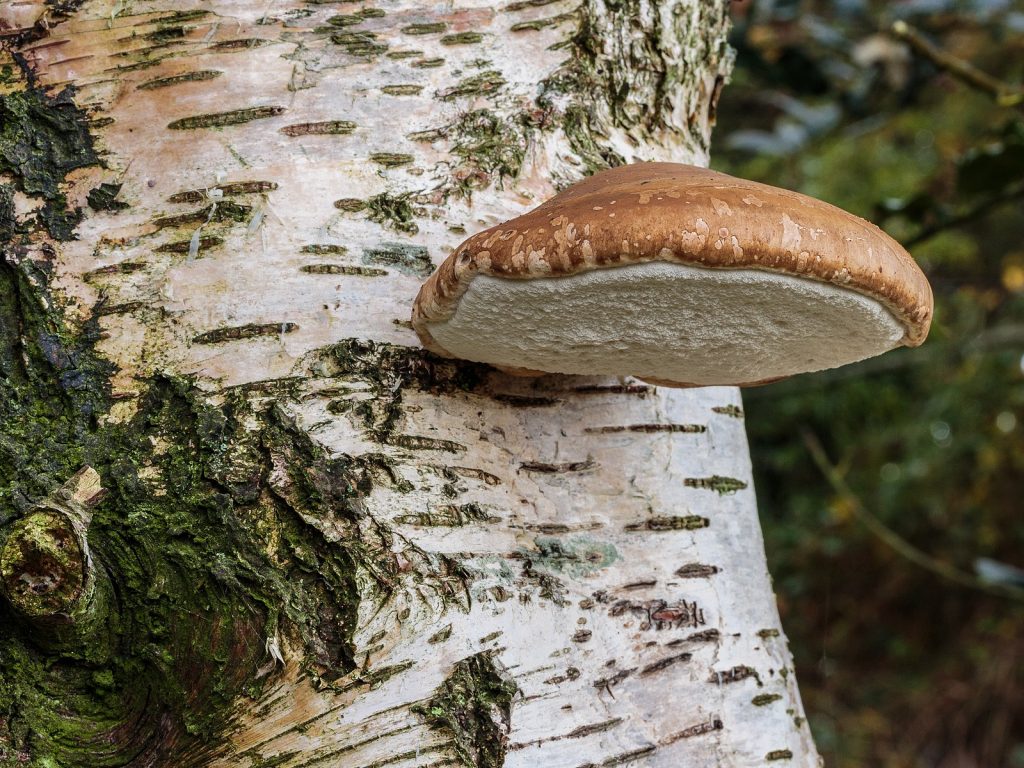Bracket Fungi
Two examples of bracket fungi: Fomes and Ganoderma

If you are observant and spend much time hiking in the woods you are sure to encounter a bracket (shelf) fungus, fruiting bodies of wood decay fungi that are found both on standing and fallen trees and form a hard outgrowth with a spore producing surface facing downward. Unlike most mushrooms (gill fungi) that produce spores on linear rows (gills) (see Agaricus), these fungi produce spores in a tissue perforated with numerous cylindric pores, generally from 0.2 to 2 mm in diameter, through which the spores are shed. Fungi producing such structures are called polypore (‘many pores’) fungi, and while there are a few polypore fungi that do produce a ‘ mushroom’ shaped fruiting body, the majority of polypore fungi are bracket fungi, growing off trees trunks and branches like a shelf or a ‘bracket’.
Phylogeny

Both of the genera discussed here (Fomes and Ganoderma), and all fungi considered bracket fungi, are Basidiomycetes (club fungi) in the Kingdom Fungi. When fungal taxonomy was based on morphology (form) , all woody polypore fungi were lumped together, i.e. there was a taxonomic entity that included all woody polypore fungi. M ore recent analysis has revealed that woody polypores come from multiple lines, i.e. that a grouping of bracket fungi or of ‘polypore fungi’ is artificial, not phylogenetic.
Structure

Both of these fungi are typical fungi, producing colonial filaments of cells (hyphae) that branch and fuse to form a feeding structure called a mycelium. This branched dendritic form penetrates the heartwood of trees to obtain nutrition. As a result of certain stimuli the hyphae will grow in a very different way (highly condensed and intertwined) and in a different place (outside the tree stem) to produce a fruiting body, where special cells associated with sexual reproduction, are produced. The fruiting body of both these genera is described as being ‘trimictic’, meaning that it is composed of three different types of hyphae: generative hyphae, the ones that produce spores; skeletal hyphae, with very thick-walled hyphae and little branching; and binding hyphae, hyphae with extensive branching.
Sex and reproduction
Both of these fungi undergo the normal sexual process shown by basidiomycete fungi (‘club-fungi’). Haploid spores of two different mating types need to germinate on a tree and find each other to form a dikaryotic mycelium that feeds on the tree and grows. At some point a fruiting body is produced in which special cells undergo karyogamy to produce a diploid cell that immediately undergoes meiosis to form haploid basidiospores that are dispersed through the air to other trees.
Matter and energy
These fungi are typical heterotrophs that feed upon biomass produced by other living organisms. They are called ‘heart rot fungi’, feeding on the heartwood, the central cylinder of tree trunks that contains no living cells. Sapwood, the outer part of a wood, does contain some living cells, although a majority of the cells are dead at maturity. The living cells of the sapwood provide the tissue with greater resistance to fungal invasion, hence most wood eating fungi are able to infect heartwood but not sapwood.

Both of these fungi are described as ‘white-rot’ fungi, a name that describes the feeding preferences of the fungus. Wood has three main components: cellulose, hemicellulose (both polysaccharides) and lignin (a complex polymer of phenolic subunits). Wood rot fungi often specialize, i.e. they have dietary preferences, for either carbohydrates or lignin. These species leave behind the material that they don’t ‘choose’ to eat, either lignin, which is generally brown in color, or cellulose, which is white. Brown-rot fungi leave behind the lignin, white-rot fungi leave behind the cellulose. Since using wood for paper or to make ethanol requires removing lignin, there is an interest in developing technologies that utilize white-rot fungi to do this.
Interactions
Since they kill no living tissues, these fungi will not directly kill trees but they may decrease the mechanical strength of trunks and cause them to break more easily (however, some argue that hollow cylinders are stronger under some circumstances than solid cylinders, in which case the action of these fungi might be considered to improve strength). The fungi need some sort of damage to the tree to allow them to enter the heartwood, this damage can come from a variety of agents: shedding of branches; damage from abrasion by the falling of neighboring trees or branches; feeding by wood eating herbivores such as beaver and porcupine; abrasion by deer and moose ‘rubbing’ the tree with their antlers or by bears stretching their claws; boys playing with hatchets.
The fungal hyphae are sometimes food for insects (larvae) that may in turn be food for other insects or for woodpeckers.
Both these fungi have interesting interactions with humans–read more about these below.
Further Reading and Viewing
- “Ganoderma applanatum, the artist’s conk” by Thomas J. Volk.
- “Fomes fomentarius, the tinder polypore” by Thomas J. Volk.

Media Attributions
- Fungi in Borneo © Cayce is licensed under a CC BY (Attribution) license
- Ganoderma applanatum © George Chernilevsky
- Fomes fomentarius © Algirdas is licensed under a Public Domain license
- Berkenzwam © Dominicus Johannes Bergsma is licensed under a CC BY-SA (Attribution ShareAlike) license

